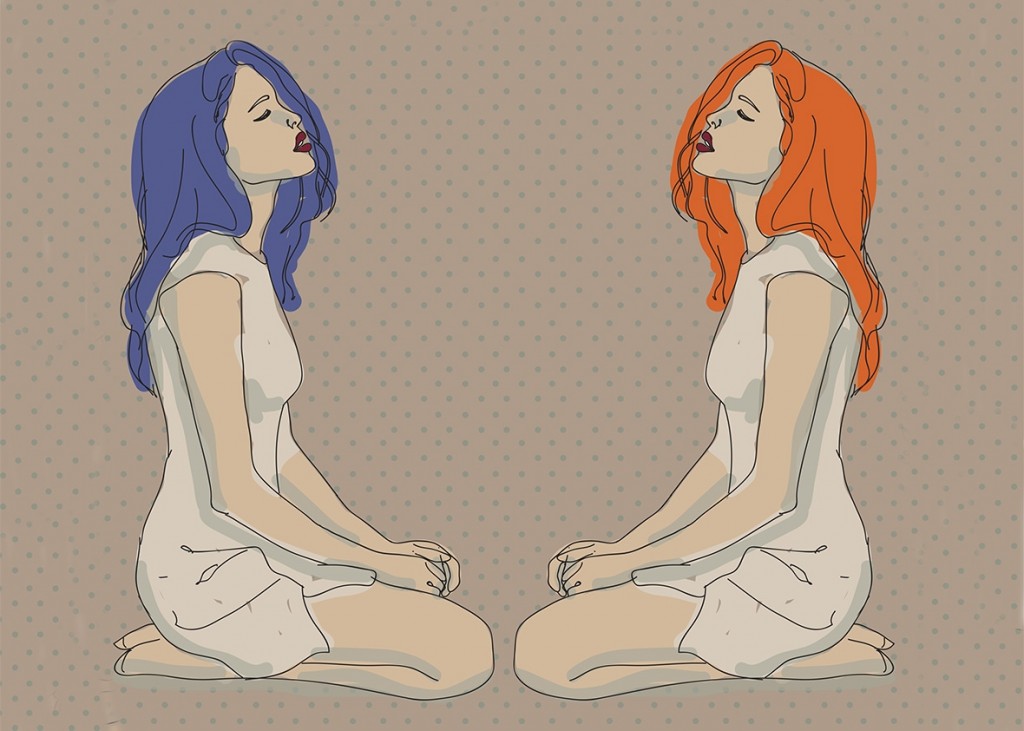Illustration by Marraal from Slate story
Writing for Slate’s Outward section on LGBTQ issues, science writer Sarah Scoles shares reflections and experiences from twenty former Mormon women.
Perhaps most striking in all of these stories is a view of lesbianism and sexuality, espoused by Mormons, that isn’t consistent with the lives and experiences of the women. The many examples include ideas that God sends ‘temptation’ in the form of brushing arms at a movie viewing, or that feeling disinterested in men is normal, because you are predestined to marry only one specific man who you were married to during ‘pre-existence’.
These confusing ideas made it difficult for many of the women to realize that they were gay, in some cases, only realizing long after they’d left the church.
From the story:
It’s easy to say, “How could you not have known you were gay?” And it does seem obvious now, with signs appearing as soon as I hit puberty. But I didn’t know, not for eight more years, four semesters at a women’s college, and three unrecognized best-friend crushes. But a crush was, by definition, something you had on a boy. So putting a girl’s picture under your pillow wasn’t synecdoche for crush—it was simply best friendship. As Janet, who resigned from the church and married her wife in November, put it, “I had no idea that gay was something you could really be.”
The piece was inspired by a document leaked in November of 2015, identifying married LGBT people as ‘apostates’, banned from all levels of heaven, whose children must disavow them in order to participate in the Mormon church.
Scoles sought out 20 ex-Mormon women who identify along the LGBTQ spectrum.
From the story:
While I once considered “ex-Mormon” to be a huge part of my identity, in my current life I mostly use it to explain why I haven’t seen R-rated movies from the ’90s and to get liberal struggle-cred. But in the wake of the church’s new policy, I wanted to find a community of other gay ex-Mormons. I spoke to 20 women—women who self-identify as lesbian, queer, pansexual, and bisexual—about their experiences, hoping to form some kind of cohesive narrative. I wanted to take data and arrange it into a story that makes sense, in a situation that doesn’t.
Perhaps the takeaway is the value in listening to the lived experiences of people who have a diversity of views and experiences; does reading this collection of stories encourage you to broaden your own views of sexuality and religion?

